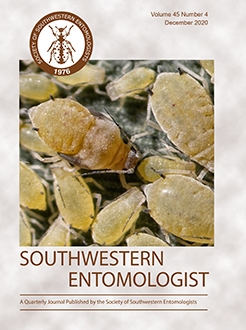Pepper weevil, Anthonomus eugenii Cano (Coleoptera: Curculionidae), is a serious threat to pepper (Capsicum annuum L.) production. In California, the pest causes major damage in southern regions where peppers are produced, but is not considered a serious pest in the Central Coast region. However, in recent years, A. eugenii consistently has caused severe yield losses in Central Coast counties of California. In 2016 and 2017, 60-63 pepper fields in the region were monitored from May-November using pheromone-baited yellow sticky traps. Total numbers of adult pepper weevils captured in traps were 1,106 and 3,100 in 2016 and 2017, respectively. Abundance of adults peaked during the production season. In 2016, the peak was in mid-September. The first of two peaks in 2017 was in June at the beginning of the season and the second was in September-October. During June-July, when pepper weevils were sprayed with insecticide, few weevils, about two per field, were counted. Starting in August (which overlapped with decreased application of insecticide), fields became very infested until the end of October in 2016 and mid-November in 2017. Peak numbers of adults captured in late season varied between years, with 330 and 463 captured in September 2016 and 2017, respectively. From October onward in both years, fruit drop with various stages of weevils inside was observed in some infested fields.
How to translate text using browser tools
11 January 2021
Phenology of Anthonomus eugenii Cano in the Central Coast Pepper-Production Region of California
E. C. Mineo,
A. Gazula,
S. V. Joseph
ACCESS THE FULL ARTICLE

Southwestern Entomologist
Vol. 45 • No. 4
December 2020
Vol. 45 • No. 4
December 2020




